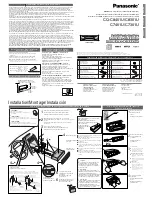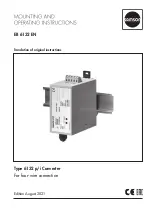
APPEAR AS
Confidential
95/352
CBR if transparent
This de-jitter mechanism will use the incoming CBR total bitrate as a guide for the
clock source of the stream. This is only valid for transparent mapped and PID
imported outputs
Preferred PCR PID
This allows you to set a PCR PID in the input multiplex as a priority to use for de-
jittering. If this PID is not available, then the next valid detected PCR will be used.
This is only valid for transparently mapped streams.
Reduced Input buffer
size
Enable or disable Reduced Input Buffer for introducing a low latency dejitter
function.
When clicking on an input port, the status parameters for this port are available in the right hand status bar.
Depending on the version of the module, various parameters are displayed.
The following information is displayed:
Sync
MPEG sync number: 188 or 204
Effective Bitrate
Effective bitrate of the input stream
Total Bitrate
Total bitrate of the input stream
Byte Mode
The byte mode specifies how the TS data is transported over the ASI link.
Burst
Mode
–
All TS data bytes are sent without any idle symbols in between
Spread
Mode
–
The SI specification requires at least one idle byte between each data
byte, and each packet start indicator (0x47) is preceded with at least two idle bytes.
The ASI output stream in
Spread
Mode
guarantees that each data byte is preceded
with two idle symbols. This effectively reduces the maximum data rate to 1/3 of the
maximum ASI output rate, i.e. (213/3) Mbps. If higher rates are required, use
Burst
Mode
.
Sync Byte Errors
Number of sync byte errors on the incoming stream
Bit Errors
Number of bit errors on the incoming stream
















































